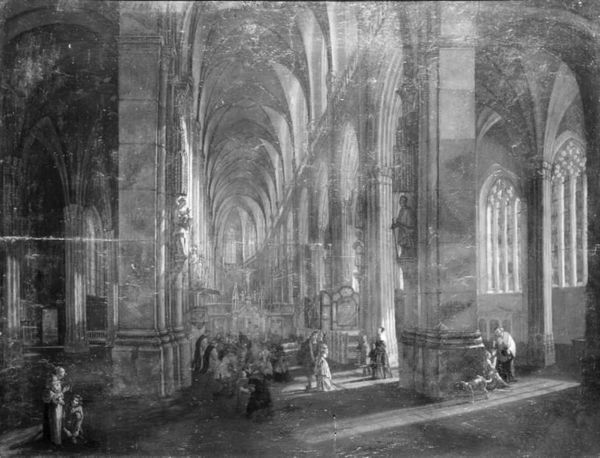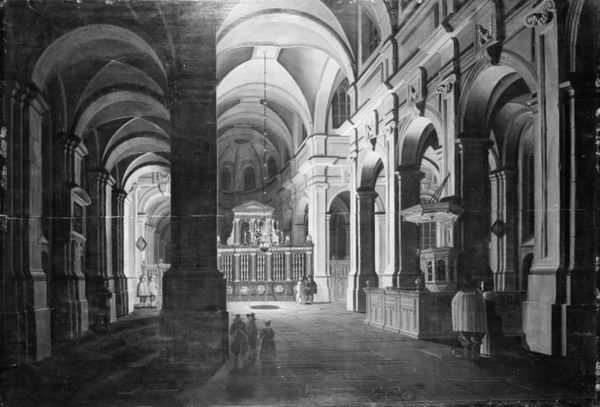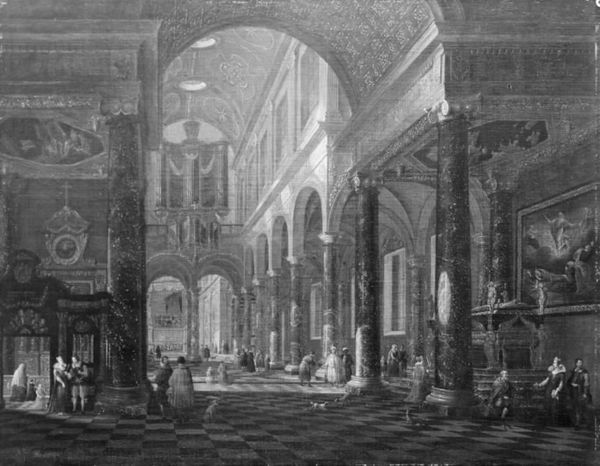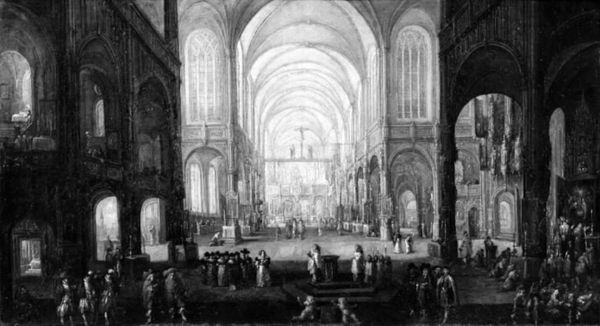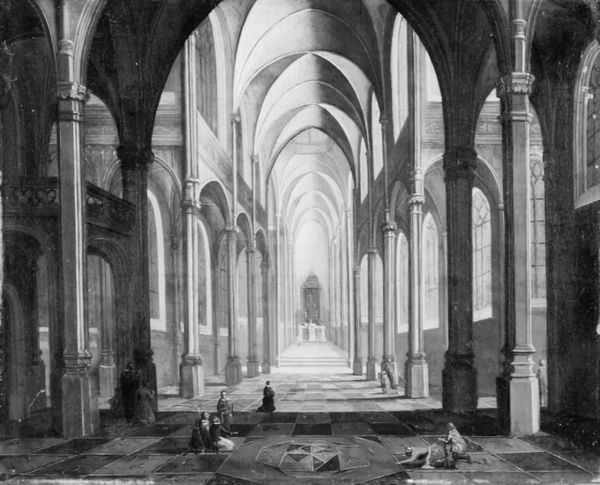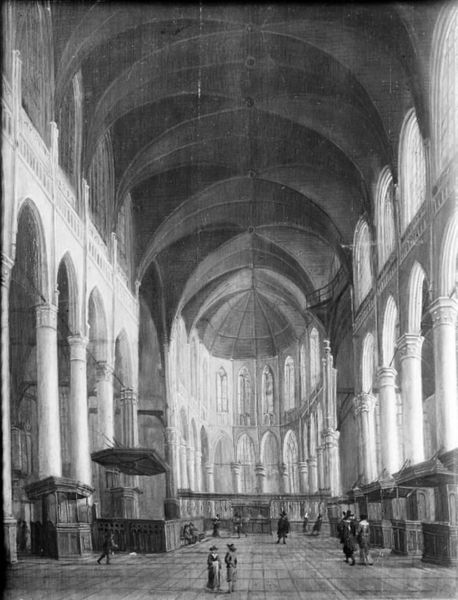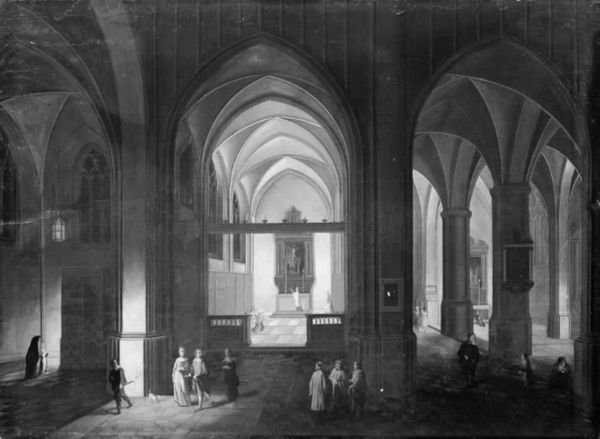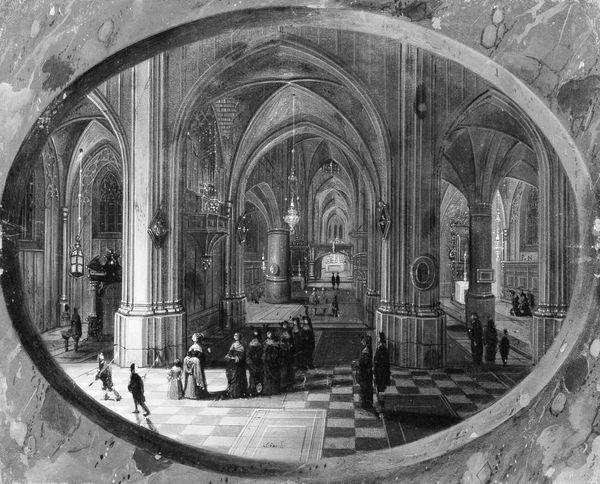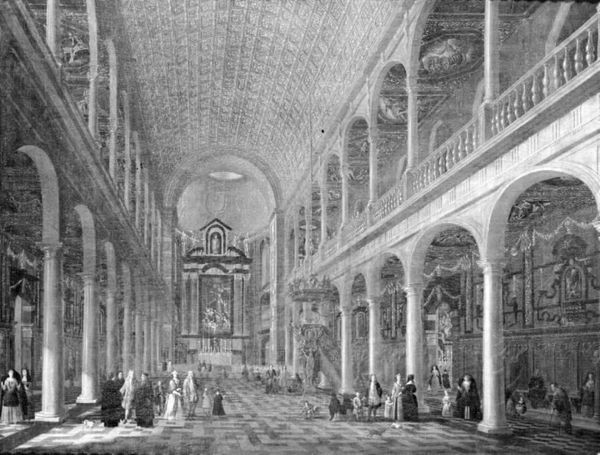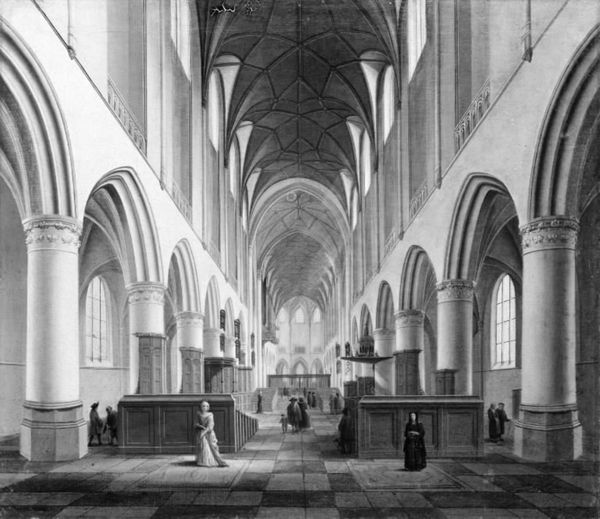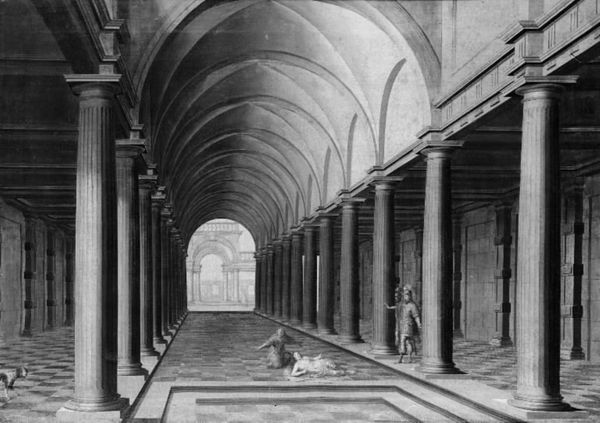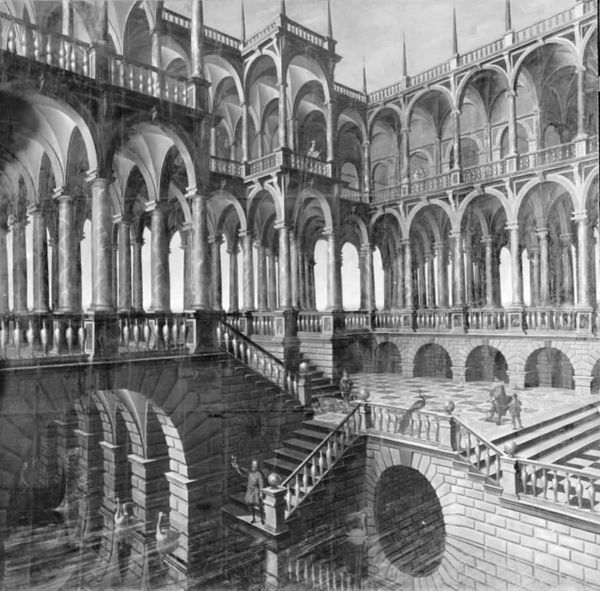
Interior of a Five-Aisled Catholic Church 1675 - 1721
0:00
0:00
painting, oil-paint, architecture
#
baroque
#
painting
#
structure
#
oil-paint
#
sculpture
#
figuration
#
history-painting
#
architecture
Dimensions: 85.5 cm (height) x 122 cm (width) (Netto)
Curator: The sheer scale of this artwork by Jacob Balthasar Peeters, entitled *Interior of a Five-Aisled Catholic Church*, immediately impresses me. Painted between 1675 and 1721 using oil paints, it depicts… well, the name pretty much gives it away. Editor: My immediate impression is one of serene immensity. The architecture overwhelms, dwarfing the figures below. It almost feels like a stage set, doesn't it? Curator: It does. What's fascinating is the theatrical use of light, almost as if the divine is illuminating the space. The way the artist plays with perspective draws you in. One has to think, how would this interior reinforce specific socio-political messages for Baroque audiences? Editor: Absolutely, and the interplay of light and shadow accentuates the structural elements – those towering columns, the graceful arches. It's all carefully designed to evoke a sense of awe and wonder. The linear composition just amplifies that. Curator: Note how Peeters populated the scene with these little groups of people. How do their postures and garments echo symbols that reveal narratives beyond our immediate vision? Does this space, conceived and built for devotion, hold echoes of cultural continuity or upheaval? Editor: And they are quite incidental figures, really. Notice how their clothing seems rather mundane in contrast to the church. Even more the case for the little dog in the center… it brings the grandiose, ideal form down to Earth with its common presence, wouldn't you say? Curator: Indeed! Peeters creates a dialogue between the eternal and the temporal through subtle inclusions that speak volumes, drawing us to the relationship between space, humanity, and the intangible essence of belief itself. Editor: Thinking purely of its pictorial effect, one appreciates how Peeters achieved the complex textural differentiation. From the cool smoothness of the stone to the more subtle handling of fabrics, there’s mastery in creating such illusory realism with oil. It holds up surprisingly well, even viewed through today’s more abstract lens. Curator: Indeed. Through this image, Peeters compels us to reconsider the powerful interaction of form and belief, where symbolism becomes the architecture of perception. Editor: Yes, and considering those dramatic formal qualities, we can truly say Peeters elevated the representation of built space into an almost sublime visual experience.
Comments
No comments
Be the first to comment and join the conversation on the ultimate creative platform.

